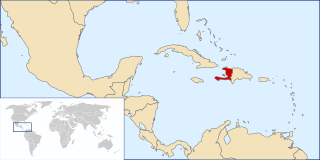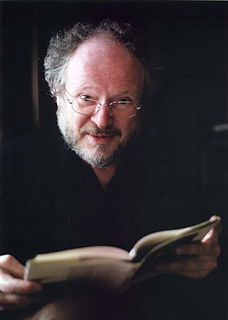Related Research Articles
A pidgin, or pidgin language, is a grammatically simplified means of communication that develops between two or more groups that do not have a language in common: typically, its vocabulary and grammar are limited and often drawn from several languages. It is most commonly employed in situations such as trade, or where both groups speak languages different from the language of the country in which they reside. Linguists do not typically consider pidgins as full or complete languages.

A creole language, or simply creole, is a stable natural language that develops from the simplifying and mixing of different languages into a new one within a fairly brief period of time: often, a pidgin evolved into a full-fledged language. While the concept is similar to that of a mixed or hybrid language, creoles are often characterized by a tendency to systematize their inherited grammar. Like any language, creoles are characterized by a consistent system of grammar, possess large stable vocabularies, and are acquired by children as their native language. These three features distinguish a creole language from a pidgin. Creolistics, or creology, is the study of creole languages and, as such, is a subfield of linguistics. Someone who engages in this study is called a creolist.

Haitian Creole, commonly referred to as simply Creole, or Kreyòl in the Creole language, is a French-based creole language spoken by 10–12 million people worldwide, and is one of the two official languages of Haiti, where it is the native language of a majority of the population.
Derek Bickerton was an English-born linguist and professor at the University of Hawaii in Manoa. Based on his work in creole languages in Guyana and Hawaii, he has proposed that the features of creole languages provide powerful insights into the development of language both by individuals and as a feature of the human species. He is the originator and main proponent of the language bioprogram hypothesis according to which the similarity of creoles is due to their being formed from a prior pidgin by children who all share a universal human innate grammar capacity.
Language contact occurs when speakers of two or more languages or varieties interact and influence each other. The study of language contact is called contact linguistics. When speakers of different languages interact closely, it is typical for their languages to influence each other. Language contact can occur at language borders, between adstratum languages, or as the result of migration, with an intrusive language acting as either a superstratum or a substratum.
Saramaccan is a creole language spoken by about 58,000 ethnic African people near the Saramacca and the upper Suriname River, as well as in Paramaribo, capital of Suriname. The language also has 25,000 speakers in French Guiana and 8,000 in the Netherlands. It has three main dialects. The speakers are mostly descendants of fugitive slaves who were native to West and Central Africa; they form a group called Saamacca, also spelled Saramaka.
A mixed language is a language that arises among a bilingual group combining aspects of two or more languages but not clearly deriving primarily from any single language. It differs from a creole or pidgin language in that, whereas creoles/pidgins arise where speakers of many languages acquire a common language, a mixed language typically arises in a population that is fluent in both of the source languages.
An English-based creole language is a creole language for which English was the lexifier, meaning that at the time of its formation the vocabulary of English served as the basis for the majority of the creole's lexicon. Most English creoles were formed in British colonies, following the great expansion of British naval military power and trade in the 17th, 18th and 19th centuries. The main categories of English-based creoles are Atlantic and Pacific.

A French creole, or French-based creole language, is a creole language for which French is the lexifier. Most often this lexifier is not modern French but rather a 17th-century koiné of French from Paris, the French Atlantic harbors, and the nascent French colonies. By the eighteenth century, Creole French was the first language of many people including those of European origin in the Caribbean. French-based creole languages today are spoken natively by millions of people worldwide, primarily in the Americas and on archipelagos throughout the Indian Ocean. This article also contains information on French pidgin languages, contact languages that lack native speakers.

Media Lengua, also known as Chaupi-shimi, Chaupi-lengua, Chaupi-Quichua, Quichuañol, Chapu-shimi or llanga-shimi, is a mixed language with Spanish vocabulary and Kichwa grammar, most conspicuously in its morphology. In terms of vocabulary, almost all lexemes (89%), including core vocabulary, are of Spanish origin and appear to conform to Kichwa phonotactics. Media Lengua is one of the few widely acknowledged examples of a "bilingual mixed language" in both the conventional and narrow linguistic sense because of its split between roots and suffixes. Such extreme and systematic borrowing is only rarely attested, and Media Lengua is not typically described as a variety of either Kichwa or Spanish. Arends et al., list two languages subsumed under the name Media Lengua: Salcedo Media Lengua and Media Lengua of Saraguro. The northern variety of Media Lengua, found in the province of Imbabura, is commonly referred to as Imbabura Media Lengua and more specifically, the dialect varieties within the province are known as Pijal Media Lengua and Angla Media Lengua.
The language bioprogram theory or language bioprogram hypothesis (LBH) is a theory arguing that the structural similarities between different creole languages cannot be solely attributed to their superstrate and substrate languages. As articulated mostly by Derek Bickerton, creolization occurs when the linguistic exposure of children in a community consists solely of a highly unstructured pidgin; these children use their innate language capacity to transform the pidgin, which characteristically has high syntactic variability, into a language with a highly structured grammar. As this capacity is universal, the grammars of these new languages have many similarities.
According to the theory of monogenesis in its most radical form, all pidgins and creole languages of the world can be ultimately traced back to one linguistic variety. This idea was first formulated by Hugo Schuchardt in the late 19th century and popularized in the late 1950s and early 1960s by Taylor (1961) and Thompson (1961). It assumes that some type of pidgin language, dubbed West African Pidgin Portuguese, based on Portuguese was spoken from the 15th to 18th centuries in the forts established by the Portuguese on the West African coast. This variety was the starting point of all the pidgin and creole languages. This would explain to some extent why Portuguese lexical items can be found in many creoles, but more importantly, it would account for the numerous grammatical similarities shared by such languages.

Robert Anderson Hall Jr. was an American linguist and specialist in the Romance languages. He was a professor of Linguistics at Cornell University and the first president of The Wodehouse Society (US).

Henri Wittmann is a Canadian linguist from Quebec. He is best known for his work on Quebec French.
In the field of linguistics, syntactic change is change in the syntactic structure of a natural language.
Cauqué Mayan is a mixed language spoken in the aldea of Santa María Cauqué, Santiago Sacatepéquez, in the Department of Sacatepéquez in Guatemala. It is a Kʼicheʼ (Quiché) base relexified by Kaqchikel (Cakchiquel). During the colonial era, Kʼicheʼ migrated to Sacatepéquez, in the heart of Kaqchikel territory, where they founded the village of Santa María Cauque. Today only older adults retain the Kʼicheʼ base to their speech: for younger speakers, the language has merged into Kaqchikel.
Susanne Maria Michaelis is a specialist in creole linguistics who is affiliated with the Max Planck Institute for Evolutionary Anthropology in Leipzig. She was previously at Leipzig University and at the Max Planck Institute for the Science of Human History in Jena.

Mauritian Creole or Morisien is a French-based creole language spoken in Mauritius. English words are included in the standardized version of the language. In addition, the slaves and indentured servants from cultures in Africa and Asia left a diverse legacy of language in the country. The words spoken by these groups are also incorporated into contemporary Morisien.
Paul Wexler is an American-born Israeli linguist, and Professor Emeritus of linguistics at Tel Aviv University. His research fields include historical linguistics, bilingualism, Slavic linguistics, creole linguistics, Romani and Jewish languages.
References
- Bakker, Peter (1997), A Language of Our Own, New York: Oxford University Press
- Bickerton, Derek; Odo, Carol (1976), General phonology and pidgin syntax, Change and variation in Hawaiian English, vol. 1, University of Hawaii
- Campbell, Lyle; Mixco, Mauricio J. (2007), A Glossary of Historical Linguistics , Edinburgh University Press, p. 170, ISBN 978-0-7486-2379-2
- Crystal, David (2008), A Dictionary of Linguistics and Phonetics (PDF), The Language Library (6th ed.), Malden, Massachusetts: Blackwell Publishing, p. 412, ISBN 978-1-4051-5296-9, LCCN 2007-52260, OCLC 317317506, archived (PDF) from the original on 29 March 2016
- Danchev, Andrei (1997), "The Middle English creolization hypothesis revisited", in Fisiak, Jacek (ed.), Studies in Middle English Linguistics, Trends in Linguistics. Studies and Monographs [TiLSM], De Gruyter Mouton, pp. 79–108, doi:10.1515/9783110814194.79, ISBN 978-3-11-081419-4, OCLC 203288487
- DeGraff, Michel (2002), "Relexification: A reevaluation" (PDF), Anthropological Linguistics, 44 (4): 321–414
- Joyce, James (1916), A Portrait of the Artist as a Young Man, New York: The Modern Library
- Matthews, P. H. (2007) [1st pub. 1997], "'Relexification'", The Concise Oxford Dictionary of Linguistics, Oxford Paperback Reference (2nd ed.), Oxford University Press, p. 343, ISBN 978-0-19-920272-0, LCCN 2007-34904, OCLC 4811330769, OL 2654835W
- Muysken, Pieter (1981), "Halfway between Quechua and Spanish: The case for relexification", in Highfield, Arnold; Valdman, Albert (eds.), Historicity and variation in creole studies, Ann Arbor: Karoma, pp. 52–78
- Singler, John Victor (1996), "Theories of creole genesis, sociohistorical considerations, and the evaluation of evidence: The case of Haitian Creole and the Relexification Hypothesis", Journal of Pidgin and Creole Languages, 11 (2): 185–230, doi:10.1075/jpcl.11.2.02sin
- Wardhaugh, Ronald (2002), "Pidgins and Creoles", An Introduction to Sociolinguistics (fourth ed.), Blackwell Publishing, pp. 57–86
- Wittmann, Henri (1989), "Relexification et argogenèse," Communication, 1er Colloque international d’argotologie, Université de Besançon, Oct. 13-1, 1989
- Wittmann, Henri (1994), "Relexification et créologenèse" (PDF), Proceedings of the International Congress of Linguists, Québec: Presses de l'Université Laval, 15 (4): 335–38
- Wittmann, Henri; Fournier, Robert (1996), "Contraintes sur la relexification: les limites imposées dans un cadre théorique minimaliste" (PDF), in Fournier, Robert (ed.), Mélanges linguistiques (in French), Trois-Rivières: Presses universitaires de Trois-Rivières, pp. 245–280